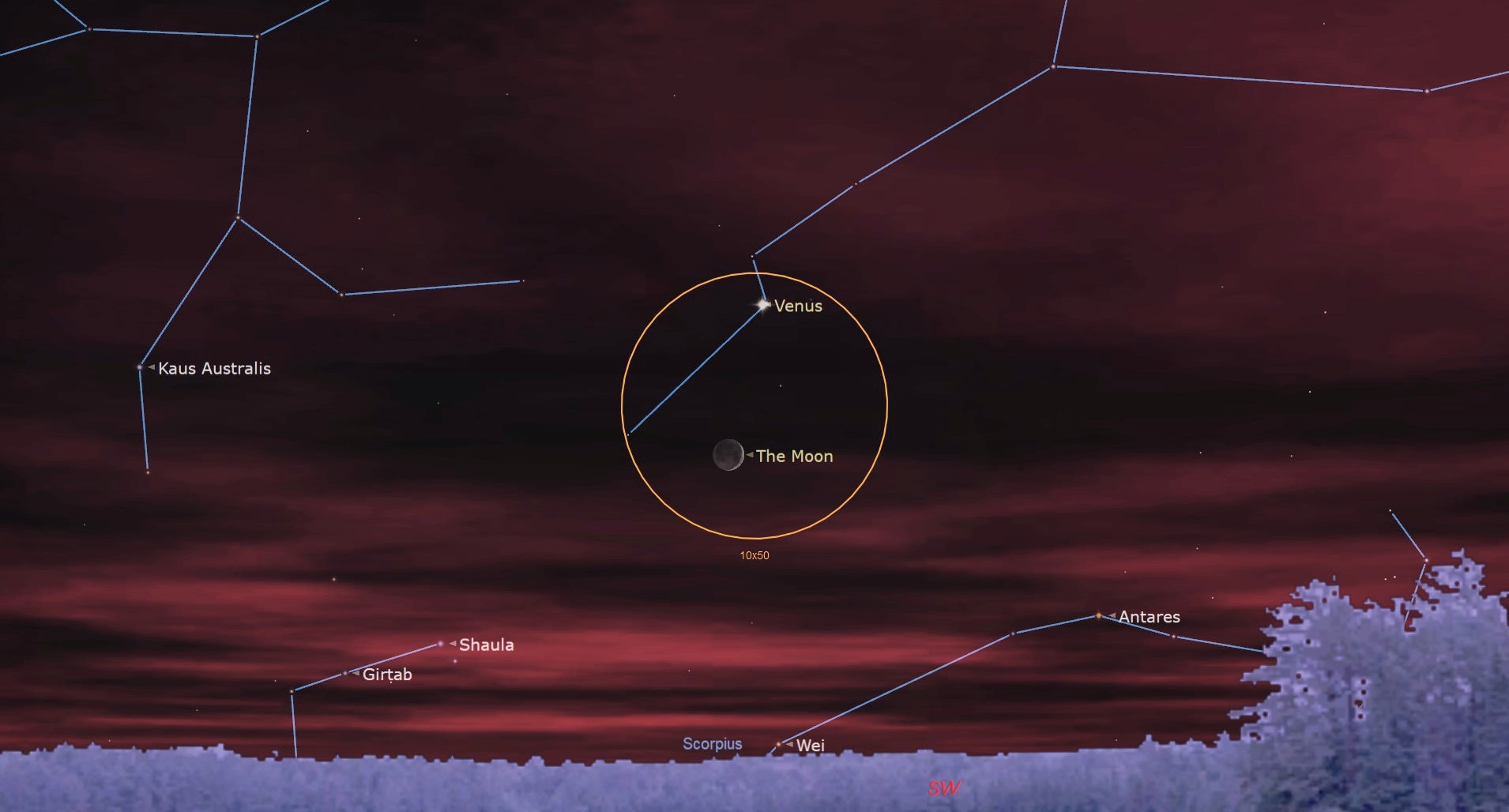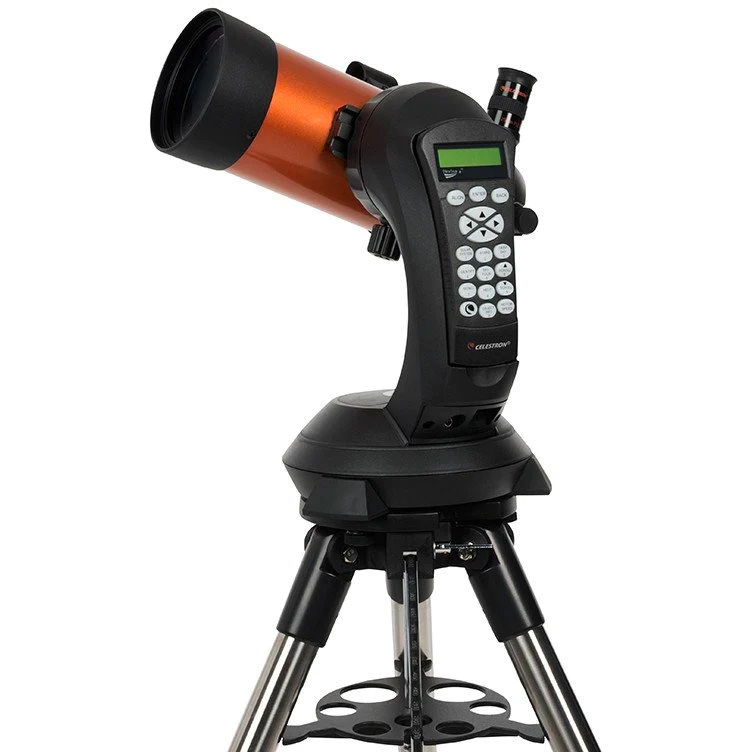
Monday evening (Nov. 4), the night before Election Day, will bring a lovely celestial display involving the two brightest objects in the nighttime sky.
The planet Venus, which has been languishing low in the dusk from late summer through early fall, at last manages to stay above the west-southwest horizon until a half hour after the end of evening twilight. About 45 minutes after sunset on Monday, look toward the southwest horizon to see Venus hovering near to the moon; an eye-catching tableau in spite of the pair's low altitude.
Venus will likely catch your eye first; it will be shining only 10 degrees above the horizon – equal to the width of your clenched fist held at arm's length. Make sure that you have a clear and unobstructed view – no trees or buildings – toward the southwest. Now look below and slightly to the left of Venus and you'll also see the slender sliver of a waxing crescent moon. This eye-catching duo will quickly descend as the sky darkens, finally setting just over 1.5 hours after sunset beyond the southwest horizon.
A Striking Pair

Want to see awesome sights in the night sky? The Celestron NexStar 4SE is ideal for beginners wanting quality, reliable and quick views of celestial objects. For a more in-depth look at our Celestron NexStar 4SE review.
These two celestial objects will certainly attract immediate attention because of their great brightness. Venus shines at magnitude -4.0, which makes it nearly eleven times brighter than Sirius, the brightest star in our night sky.
The moon will be a little over 3 days past its new phase and about 10% illuminated. Look also for the beautiful phenomenon known as "Earthshine" – sunlight reflected by the Earth, directed toward the moon and dimly illuminating its dark portion with a faint grey-blue glow. That effect will impart an almost three-dimensional appearance to the moon and will enhance the overall scene.
Venus is currently 107 million miles (172 million km) from Earth, while the moon is only about 244,900 miles (394,200 km) away. As a result, the moon appears to move much more rapidly against the background stars than Venus.
Because of this rapid movement, when the sun sets on the following (Tuesday) evening, the configuration between Venus and the moon will have radically changed. In fact, the moon – whose illuminated sliver will have noticeably widened to 17% – will now be positioned well to the east of Venus.
Get the Space.com Newsletter
Breaking space news, the latest updates on rocket launches, skywatching events and more!
During the Daytime too!
And the moon's proximity relative to Venus will also give you a chance to try and glimpse Venus during the daytime. If your sky is mostly clear with little or no haze, check your south-southwest sky during the late afternoon hours of Monday – say around 3:30 p.m. – and try to locate the moon, which will appear about 17 degrees (a bit more than "one and half fists") above the horizon.
If you find the moon, Venus will be situated just about four degrees to above it. Try using binoculars first and then your bare (unaided) eyes.
And if clouds block your view of Monday's Venus/moon get together, another very similar pairing-off between the two will occur a month from now, on Dec. 4.
Want to catch the next celestial spectacle in the night sky? Check out our guides on our best telescopes for beginners or the best binoculars to find the right gear to help you get an up close look at the cosmic wonders in our night sky.
And don't miss our guide to the night sky for tonight, updated daily with what you need to know for watching the skies.
Joe Rao serves as an instructor and guest lecturer at New York's Hayden Planetarium. He writes about astronomy for Natural History magazine, the Farmers' Almanac and other publications.
Join our Space Forums to keep talking space on the latest missions, night sky and more! And if you have a news tip, correction or comment, let us know at: community@space.com.

Joe Rao is Space.com's skywatching columnist, as well as a veteran meteorologist and eclipse chaser who also serves as an instructor and guest lecturer at New York's Hayden Planetarium. He writes about astronomy for Natural History magazine, Sky & Telescope and other publications. Joe is an 8-time Emmy-nominated meteorologist who served the Putnam Valley region of New York for over 21 years. You can find him on Twitter and YouTube tracking lunar and solar eclipses, meteor showers and more. To find out Joe's latest project, visit him on Twitter.









